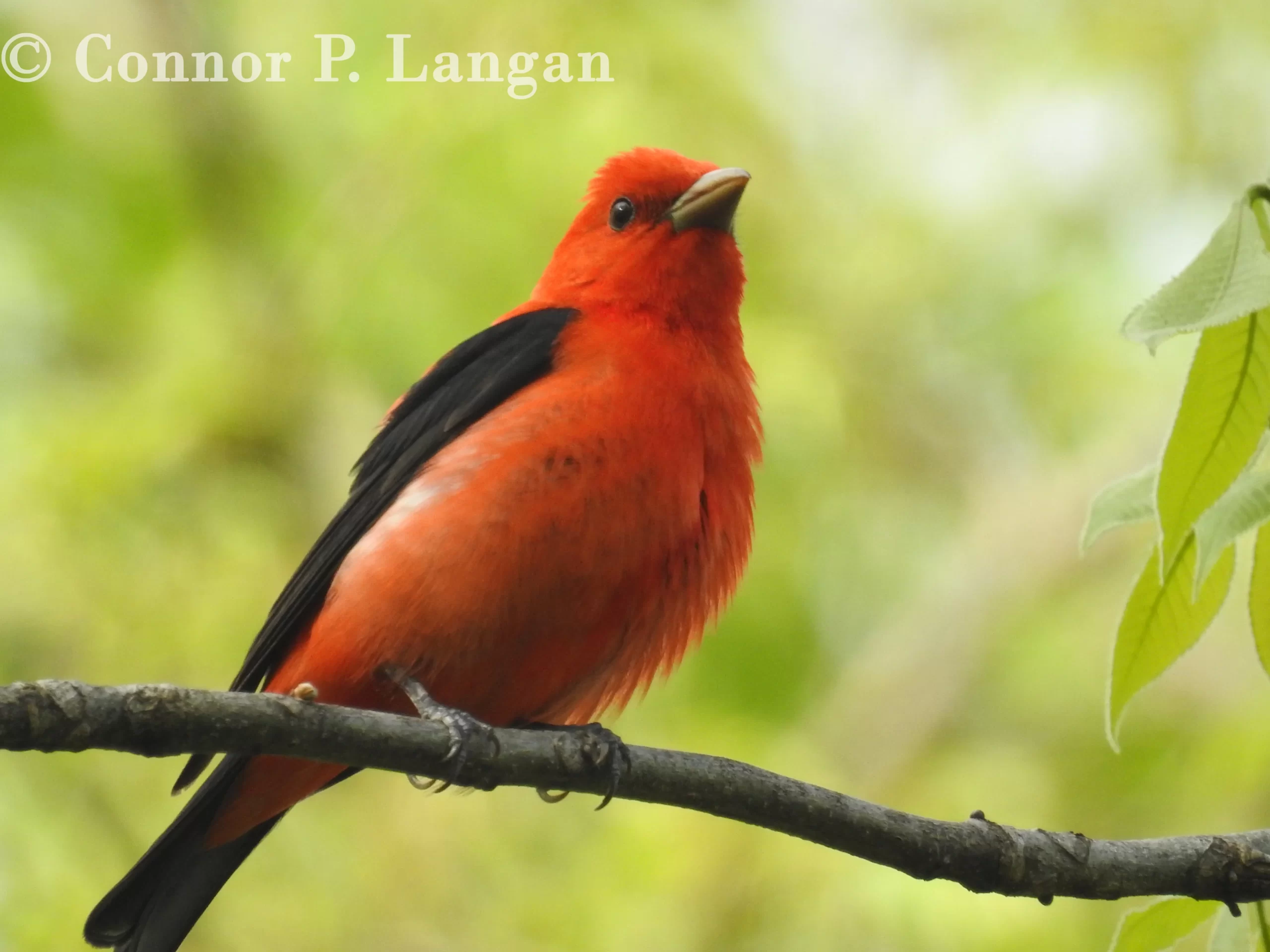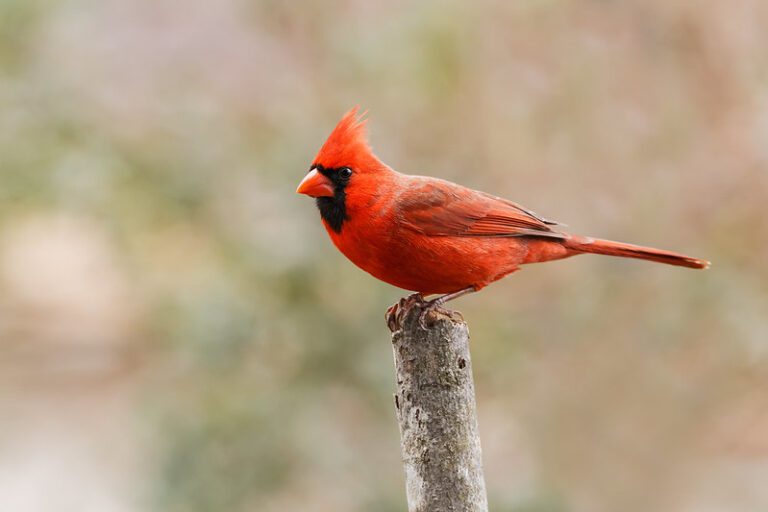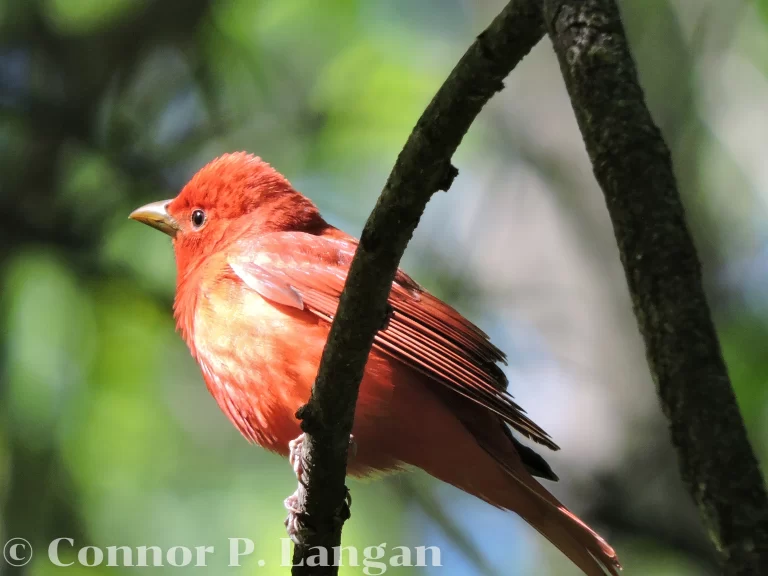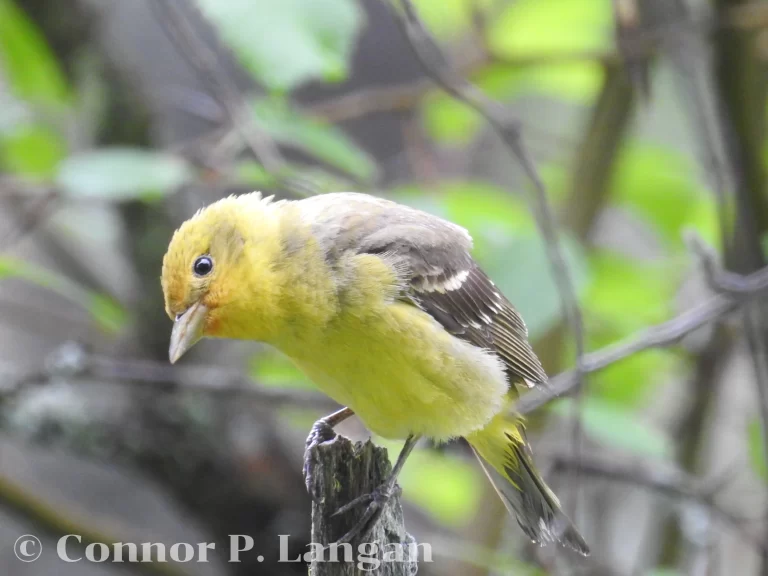Description
Scarlet Tanagers are round, large-headed songbirds with large beaks and short tails. These birds have a beady-eyed appearance on their plain faces.
These birds are usually close to 6.5 inches long, and they weigh 0.8 to 1.3 ounces.
Male Scarlet Tanagers have a striking crimson plumage with black wings and cream-colored beaks.
Female Scarlet Tanagers have a yellow-green plumage with dark green wings and tails. The beaks of females tend to be slightly darker than those of males.
During the nonbreeding season, males retain their black wings but lose their brilliant red plumage. Instead, males develop a green plumage that is comparable to the plumage that females possess.
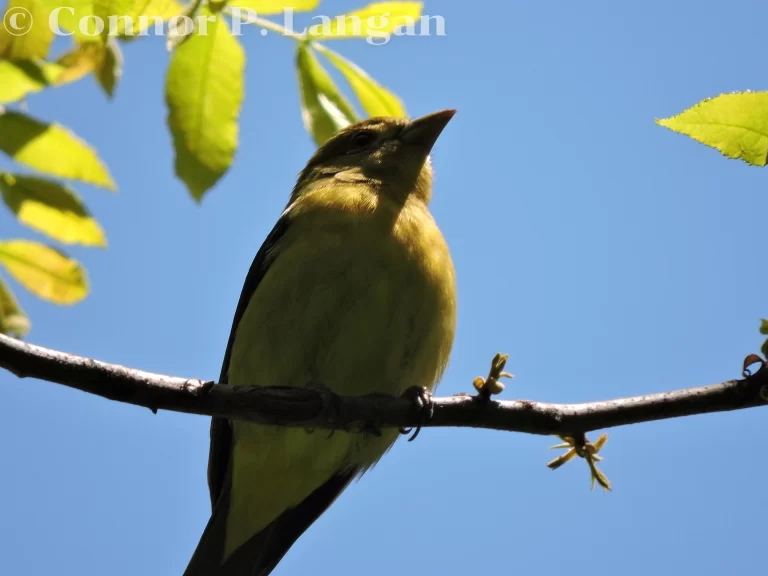
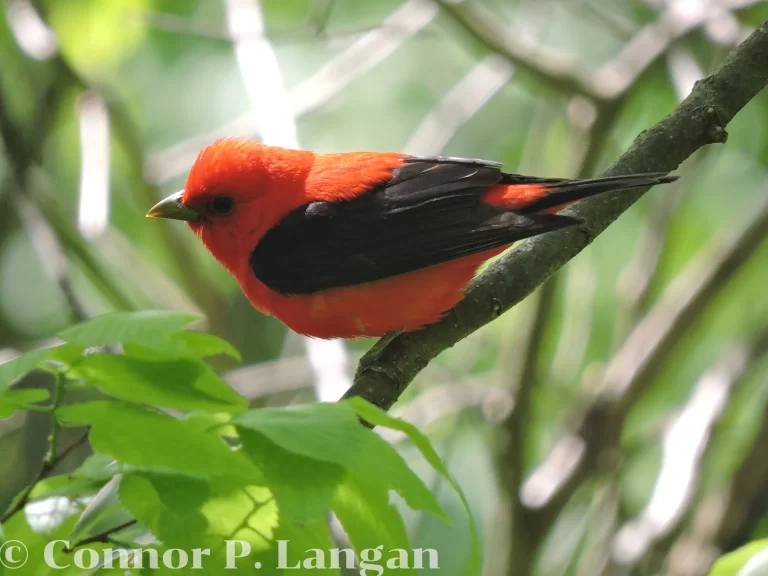
Behavior
Despite their dazzling looks, Scarlet Tanagers are shy birds that rarely stray far from the comfort of a tree canopy.
Scarlet Tanagers associate with other birds in mixed-species flocks during the nonbreeding season, but on their breeding grounds, they tend to only associate with their families.
Diet
These birds have diets that consist primarily of insects and fruits. On their breeding ground, Scarlet Tanagers primarily eat insects and other invertebrates. Being nimble in flight, these birds can capture a wide array of invertebrates. Scarlet Tanagers will supplement their diets with fruits when insects are not readily available.
Habitat
Scarlet Tanagers seek out sizable, mature tracts of deciduous or mixed forests during the breeding season, while they avoid coniferous forests.
During migration, look for Scarlet Tanagers in similar habitats to those in which they breed. This species may also be found in woodlots, parks, and shelterbelts. In the winter, Scarlet Tanagers may be found in a variety of forested locales.
Range
Scarlet Tanagers breed in the United States east of the Great Plains and parts of southeastern and south-central Canada. Absent from much of the American Southeast during the breeding season, Scarlet Tanagers migrate from wintering grounds that are well over 1,000 miles away.
These birds spend the winter in locations as far south as Bolivia.
Breeding
Scarlet Tanagers are monogamous by nature, though birds choose a new mate each breeding season. Males sing to attract a female and defend their breeding territory, while females keep a low profile with their exceptional camouflage.
Females select nest sites that are high up in the canopy of a mature forest. Nests are often located at the intersection of tree branches under the cover of leaves. This species tends to prefer deciduous trees for nesting.
It takes a female Scarlet Tanager between 3 to 4 days to construct a nest from an assortment of twigs, grasses, leaves, and other plant fibers. These birds do not invest as much time into nest creation as other species, as females pile materials onto nesting sites and then gradually shape the materials to fit around their bodies. The result is a messy-looking assortment of materials that is vaguely shaped like a cup.
Scarlet Tanagers produce a single brood of eggs each year, with clutches containing between 3 to 5 eggs. It takes anywhere from 12 to 14 days for the young to hatch out of the eggs, while the nestlings fledge from the nest 9 to 15 days later. Both parents feed the young at the nest and continue to do so in the days following their departure.
Backyard Birding
Scarlet Tanagers are shy birds that do not like to remain in the open for long periods, however, these birds may visit jelly feeders or other fruit feeders during migration. Scarlet Tanagers are not cavity nesters, so they will not use birdhouses.
If you have a fair number of mature trees in your yard, watch for Scarlet Tanagers to stop by during migration. This species may feed from plants that produce fruits or berries.
Population Status
Scarlet Tanager populations have been fairly constant over the last half-century, with just shy of 3 million birds estimated in the total population of this species.
Scarlet Tanager Facts
- In 2020, the first instance of a Scarlet Tanager x Rose-breasted Grosbeak was documented.
- Scarlet Tanagers are generally quite sensitive to habitat fragmentation. Breeding success is known to plummet dramatically in fragmented tracts of forest.
- Scarlet Tanagers aggressively respond to Brown-headed Cowbirds in their territories, as these birds

